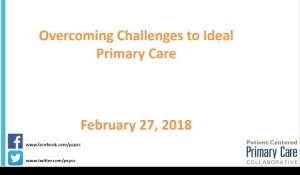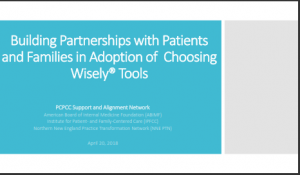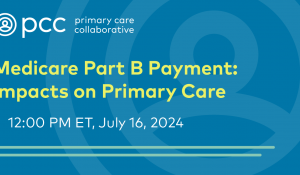You are looking at an archived version of our site. Please visit thepcc.org for a fresh, new experience!
Continuous

- Dynamic, trusted, respectful and enduring relationships between individuals, families and their clinical team members are hallmarks of primary care. There is continuity in relationships and in knowledge of the individual and their family/care partners that provides perspective and context throughout all stages of life including end of life care.
Resources
National Association of Primary Care - November 2018
This resource acts as a guide on how to link social care and primary care to create a more holistic, continuous care system. This models acts to support communities as well as reduce long-term care costs. The integrated system also works to allow individuals to love independently for longer and ensure that all their needs are being met.
Annals of Family Medicine - November 2018
Harvard Medical School Center for Primary Care - July 2017
The model of Direct Primary Care is a subscription-based model aiming to circumvent the barriers posed by coding and payment schemes in traditional fee-for-service care. This model improves continuity as well as accessibility of care for patients. It also works to focus on the patient as a person rather than focusing on the payment scheme, making care more equitable.
BMJ - February 2017
This study found that higher continuity of care was associated with fewer hospital admissions. This shows how continuous care can improve health outcomes and reduce costs.
RTI International - February 2016
This research showed that patient-centered medical home (PCMH) practices had higher continuity of care and lower total costs than non-PCMH practices. The study concluded that care continuity is a great driver of cost reductions.
Family Practice - October 2015
A continuous relationship between patients and their primary care providers was shown to reduce emergency department use. Ensuring that patients have access to this type of continuous primary care can result in cost savings and improves outcomes.
Continuity and Trust in Primary Care - September 2010
This study looks at how continuity of care helps to develop trust between patients and their primary care providers. Seeing the same provider allows patients to develop secure expectations and the feeling that their doctor has their best interests at heart. This can help to improve treatment adherence and quality of care.
Webinars
Secondary menu
Copyright © 2024 Primary Care Collaborative













